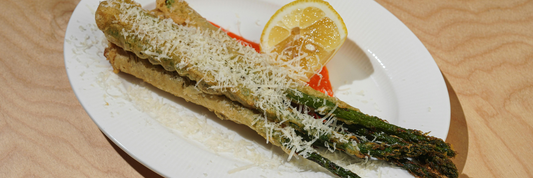Which is better for your kitchen: silicone or wooden tools? This article cuts through the fluff and goes into the benefits and drawbacks of each, helping you select the best utensil for every use.
- Wooden Cutlery Reviews: What Real Customers Are Saying
- Are Wooden Spoons Safe? What Every Restaurant Owner Should Know
Brief Overview of Wooden Utensils
Wood, unlike silicone, is a natural material. Wooden utensils are made from a variety of woods. They each have advantages and disadvantages of their own.
What Are Common Wooden Utensils?

Wooden can be used as materials for many utensils, including:
- Spoons with various sizes such as Ice Cream Spoon Wooden 3.75 inches or Disposable Wooden Spoon 6.3 Inch (160 mm)
- Spatulas (angled, flat, etc.)
- Whisks
- Tongs
- Rolling pins
- Cutting boards
- Serving spoons and forks
- Salad servers
- Measuring spoons
- Mixing bowls
- Pestles and mortars
See more: Disposable Wooden Cutlery
What Are Advantages of Wooden Utensils
Because wood is a natural substance, it is an excellent alternative to plastic. Furthermore, wooden utensils provide several advantages, such as:
- Heat-resistant: Can handle most cooking temperatures without warping or melting. Wooden utensils can handle the temperature up to 350°F/175°C, may warp
- Natural and eco-friendly: Made from renewable resources, they're a sustainable choice compared to plastic.
- Gentle on cookware: Won't scratch nonstick surfaces or damage delicate pots and pans.
- Beautiful and tactile: The natural wood grain adds a touch of warmth and elegance to any kitchen.
- Good grip: Wood provides a comfortable and secure grip, even when wet.
What Are Disadvantages of Wooden Utensils
Wood materials do, however, still have certain benefits, such as:
- Can absorb flavors and odors: Requires thorough cleaning and may retain strong flavors like garlic or onion.
- Prone to cracking and warping: Over time, they may crack or warp with exposure to heat and moisture.
- Requires special care: Hand-washing is recommended, and occasional oiling to prevent drying and cracking.
- Not dishwasher-safe: It can warp or crack in the dishwasher.
Things You Need to Know When Buying Wooden Utensils
Because of the benefits and drawbacks, you should be aware of the following when selecting wooden utensils:
- Wood type: Choose hardwoods like oak, walnut, or maple for their durability and resistance to warping. Avoid softwoods like pine, which can splinter.
- Finish: Opt for untreated or food-grade finishes to avoid harmful chemicals.
- Size and shape: Choose utensils that fit comfortably in your hand and are suitable for your intended tasks.
- Care instructions: Follow the manufacturer's care instructions for cleaning and maintenance.
Brief Overview of Silicone Utensils
One material that is man-made is silicone. It is a synthetic substance composed of various elements and sand. We'll go over its various features and uses below.
What Are Common Silicone Utensils?
Silicone has entered practically every kitchen utensil category, but some have become ubiquitous due to their exceptional functionality. Here are some of the most common silicone utensils you'll probably come across:
- Spatulas (angled, mini, etc.)
- Spoons (regular, slotted, measuring)
- Whisks (regular, detachable head)
- Tongs (regular, grilling)
- Pastry tools (dough scraper, pastry brush, piping bag)
- Other options (bottle scrapers, measuring cups, spoon rest, oven mitts)
What Advantages of Silicone Utensils
Because of their many benefits, silicone utensils are essential for any home kitchen. Their benefits are listed as follows:
- Heat-resistant: They can handle high temperatures without melting or warping, making them ideal for hot foods and ovens. Silicone utensils can withstand the high temperature up to 450°F/230°C)
- Non-stick: Food easily glides off, leaving less to scrape and making cleanup a breeze.
- Flexible: They reach into corners and scrape the sides of bowls and pans effortlessly.
- Durable: They withstand drops and bumps better than many other materials.
- Easy to clean: Smooth surface makes them simple to rinse or toss in the dishwasher.
- Versatile: Available in various shapes and sizes for different tasks.
- Stain and odor-resistant: They don't retain the aroma or color of food.
- Safe for nonstick cookware: Unlike metal, they won't scratch your precious pans.
What are Disadvantages of Silicone Utensils
Aside from the benefits, there are also drawbacks to using silicone utensils, which include:
- May melt at extremely high temperatures: While they can handle most cooking, avoid direct contact with open flames.
- Not as precise as metal: The flexibility can make them less ideal for tasks requiring delicate control, like carving meat.
- Can absorb oil over time: Regular cleaning is important to maintain their non-stick properties.
- Limited color options: While some vibrant colors are available, the selection isn't as extensive as with plastic or wood.
Things You Need to Know When Buying Silicone Utensils
Before buying silicone utensils, here are things you should know first:
- Beware of cheap imitations: Lower-quality silicone may contain harmful chemicals or lack heat resistance. Stick to reputable brands.
- Consider your needs: Don't overspend on fancy tools you won't use. Start with a few basic utensils and add more as needed.
- Feel the texture: Some silicone feels smooth and sleek, while others have a slightly grippy texture. Choose what you find comfortable to use.
- Read customer reviews: Check online reviews for insights into specific brands and products.
What Are the Key Differences between Silicone and Wooden Utensils
Here is a table that contrasts the main distinctions between these two types of utensils based on the breakdowns of each kind provided above:
|
Feature |
Silicone |
Wooden |
|
Material |
Synthetic polymer |
Natural wood |
|
Heat resistance |
Excellent (up to 450°F/230°C) |
Good (up to 350°F/175°C, may warp) |
|
Non-stick |
Excellent |
Gentle on cookware, not truly non-stick |
|
Flexibility |
Highly flexible |
Less flexible, holds shape |
|
Durability |
Long-lasting, tear-resistant |
Can crack or warp over time |
|
Cleaning |
Easy, dishwasher safe |
Hand-wash recommended |
|
Sustainability |
Not biodegradable, some recycled options |
Renewable resource (choose FSC-certified) |
|
Safety |
Check for food-grade and BPA-free |
Untreated wood generally safe, avoid harmful finishes |
|
Aesthetics |
Wide range of colors and finishes |
Warm, natural look with unique grain patterns |
With these distinctions, deciding which is superior is difficult. Every one of these materials has advantages and disadvantages. Thus, which is better will depend on your preferences and demands.
Which Is Better: Silicone or Wooden Utensils?
As was already mentioned, your demands and preferences will determine which silicone or wooden utensil is better. The following breakdowns could aid in your decision-making:
Heat Resistance and Non-Stick:
- Silicone: Ideal for high-heat cooking (up to 450°F) and non-stick cookware. Food glides right off, making cleaning a breeze. Think flipping pancakes, searing steaks, or baking delicate cakes.
- Wood: Good for everyday cooking temperatures (around 350°F) and gentle on nonstick surfaces. Not as non-stick as silicone, but its natural texture prevents scratches. Perfect for stirring soups, folding batters, or mixing sauces.
Versatility and Durability:
- Silicone: Highly flexible, reaching every corner for thorough scraping. Durable and tear-resistant, even with rough use. Ideal for scraping jars, whisking eggs, or piping frosting.
- Wood: Holds its shape well for tasks like stirring thick soups or mixing pancake batter. Can crack with rough use or prolonged exposure to heat. Choose harder woods like oak or walnut for increased longevity. Great for serving spoons, salad servers, or cutting boards.
Cleaning and Sustainability:
- Silicone: Dishwasher safe for easy cleaning. Not biodegradable, but some brands offer recycled options.
- Wood: Hand-washing recommended. Renewable resource, but choose FSC-certified wood for sustainable forestry practices. Requires occasional oiling to prevent drying and cracking.
See more: How to Clean Wooden Cutlery?
Food Compatibility and Aesthetics:
- Silicone: Inert and non-porous, ideal for acidic dishes or foods with strong flavors. Available in a wide range of vibrant colors.
- Wood: Some softwoods may leach resin, so choose harder woods for certain foods. Offers a warm, natural look with unique grain patterns.
Additional Factors:
- Budget: Silicone can be more expensive than wood, especially for high-quality brands.
- Storage: Silicone is generally more compact and easier to store than wooden utensils.
- Occasional use: If you only cook occasionally, wood might be a more budget-friendly option.
Overall, here is an overview of the differences between silicone and hardwood cutlery.
Choose silicone if:
- You cook at high temperatures frequently.
- You need non-stick properties for delicate dishes.
- You prefer easy cleaning and dishwasher convenience.
- You like vibrant colors and modern aesthetics.
Choose wood if:
- You prioritize sustainability and natural materials.
- You appreciate a gentle touch on nonstick cookware.
- You like the traditional, rustic look and feel.
- You don't mind hand-washing and occasional oiling.
Conclusion
In summary, both silicone and wooden utensils have advantages and disadvantages. The best option is dependent on your requirements and preferences. Understanding their distinctions can help you make the best option.




